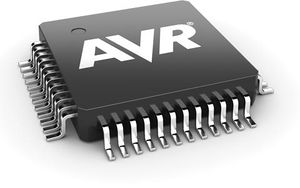We are still actively working on the spam issue.
Difference between revisions of "AVR"
m (deletion tag) |
(Basically added a few more details, and tried to make it more educational for the reader and added info relevant to diy-er) |
||
| Line 2: | Line 2: | ||
{{stub}} | {{stub}} | ||
[[File:Avr.jpg|thumb]] | [[File:Avr.jpg|thumb]] | ||
| + | |||
| + | AVRs are like UNIX in microcontrollers world - they're old (first were developed in '96), compared to Arduino™ hard to learn, but stable and effective (if you know how to use them). They are great tools for hobbyists and professionals alike to take an initial dip into the world of low level computers (aka microcontrollers) and embedded devices in general. If you want to make some cheap-ass electronic project, lighting driver for example, there's no better technology to choose. Only thing you need to start is USBasp programmer and some basic electronic components like capacitors, resistors. Additionally, you can buy a whole AVR kit (including the In Circuit Programmer, the pre assembled board, and a few jumper wires) for as low as 10$. | ||
| + | |||
| + | If you wish, you can | ||
| + | |||
'''To setup the environment go [http://www.instructables.com/id/How-to-get-started-with-Eclipse-and-AVR/ HERE]''' | '''To setup the environment go [http://www.instructables.com/id/How-to-get-started-with-Eclipse-and-AVR/ HERE]''' | ||
| − | |||
| − | AVR | + | To setup the AVR development environment on a UNIX or Linux based distribution, you need a few pieces of software before starting. |
| + | If you use a mainstream distribution, you just need to install these packages from the repository | ||
| + | |||
| + | * '''gcc-avr''' to compile the program after writing it, if you program in C | ||
| + | * '''g++-avr''' to compile the program after writing it, if you program in C++ | ||
| + | * '''avra''' to compile the program after writing it, if you program in assembly | ||
| + | * '''avrdude''' to 'burn' or simply transfer the program from from the .hex file to your actual micro-controller using the ISP (In System Programmer) | ||
| − | + | That's about it, you can use any text editor to program these. The languages that can be used are | |
| − | + | * C (recommended) | |
| + | * Assembly | ||
| + | * C++ | ||
Revision as of 15:57, 30 April 2016
AVRs are like UNIX in microcontrollers world - they're old (first were developed in '96), compared to Arduino™ hard to learn, but stable and effective (if you know how to use them). They are great tools for hobbyists and professionals alike to take an initial dip into the world of low level computers (aka microcontrollers) and embedded devices in general. If you want to make some cheap-ass electronic project, lighting driver for example, there's no better technology to choose. Only thing you need to start is USBasp programmer and some basic electronic components like capacitors, resistors. Additionally, you can buy a whole AVR kit (including the In Circuit Programmer, the pre assembled board, and a few jumper wires) for as low as 10$.
If you wish, you can
To setup the environment go HERE
To setup the AVR development environment on a UNIX or Linux based distribution, you need a few pieces of software before starting. If you use a mainstream distribution, you just need to install these packages from the repository
- gcc-avr to compile the program after writing it, if you program in C
- g++-avr to compile the program after writing it, if you program in C++
- avra to compile the program after writing it, if you program in assembly
- avrdude to 'burn' or simply transfer the program from from the .hex file to your actual micro-controller using the ISP (In System Programmer)
That's about it, you can use any text editor to program these. The languages that can be used are
- C (recommended)
- Assembly
- C++
